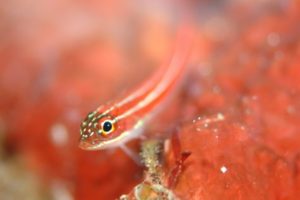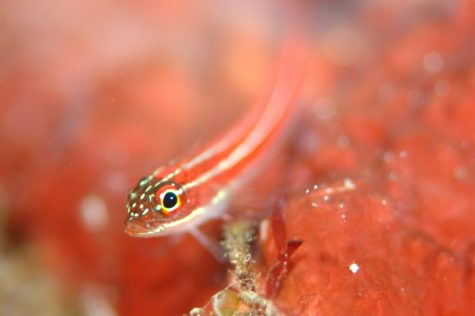GOTHENBURG, Sweden — Imagine the classic scene of a young suitor outside his would-be lover’s window. As he prepares to serenade her, guitar in hand, a nearby road crew fires up the jackhammer.
This is just the sort of modern intrusion on a long held courtship ritual — that is disrupting fish reproduction all across the world, except instead of jackhammers, it’s equipment such as “seismic airguns.”

A fresh doctoral thesis out of University of Gothenburg explains how such noise pollution is putting the brakes on the mating rituals of gobies, which are an important source of food for cod — which, of course, are in turn an important source of food for humans.
The thesis author, Eva-Lotta Blom, says that a large part of the problem is that beneath the waves, sound travels much farther and almost five times faster than in the air.
“We can record the noise of boats that are far out of sight, and the sound is basically unchanged. It can be likened to living in Gothenburg and hearing the sound of all the cars driving around in Stockholm,” Blom says in a press release. “That would be very noisy and would probably not be permitted, since it would be considered a health hazard. However, this does not apply to our seas, since there are no clear noise regulations for that environment.”
While the discovery of the importance behind sounds certain fish make for mating is relatively new, Blom says it is already clear that these important sounds or “songs” are subject to disruption.
“So against the background of the rapidly growing use of leisure boats and other sources of noise in the marine environment, it is important to understand how fish are affected by noise,” she explains.
While boats are a common source of noise pollution, industrial sources such as pile driving seem to be some the biggest problems according to the researchers. In the paper, Blom also notes lesser known, but increasingly common sources of noise pollution such as “seismic airguns.”
“Seismic airguns have a widespread usage, especially in the search for oil at different layers of the seafloor,” she writes. “In recent years, the use of seismic airguns has moved into even deeper waters where it has a great potential to be propagated further.”
With gobies in particular, the noise seems to be a real issue in the bedroom. Living only a slightly more than a year, the little guys often nest in empty clam shells. This is where the magic happens, and with short life spans, they must hurry. House-proud and ready to show off these nests, the males wait to turn on the music until a lady arrives.
“If a female comes over to inspect his nest, the male is able to produce a sound that is critical to the female’s decision of whether or not to mate with him,” Blom says. “The sand goby sounds like a purring cat while the smaller common goby sounds more like an intense woodpecker.”
If the female likes what she hears, she will spawn in his nest and he will be left to raise the children. But exactly what it is about the sound he makes that spurs her interest remains unknown.
“The sound may contain some type of information, but if this is the case, we have no idea what the information might mean,” Blom says. “What we do know, however, is that the singing is critical to the male’s reproductive success.”
This idea was confirmed when Blom, alongside fellow researchers, performed experiments wherein females and males were left to interact over a twelve hour period. One set of fish were in tanks that were nice and quiet, and the other sets were in tanks exposed to simulated boat noise.
“What we found was remarkable,” Blom says.
In the noisy environment, the fish didn’t mate much, and in the few instances they did, it took them longer. What’s more, half of the eggs in the noisy aquariums died without hatching and those that did hatch took longer to do so.
This startling research adds to other recent studies, such as one on seabass, that point to the dangers of noise pollution on other fish populations.
“Sea bass, along with other bony fishes, rely on a characteristic ‘startle and response’ mechanism to get away from predators,” says that study’s lead researcher Ilaria Spiga. “Exposure to underwater noises can make it harder for fishes to detect and react to predators.”
Guessing at what Blom would later confirm with the gobie experiments, Spiga also speculated that underwater noise pollution would likely effect reproduction.
In addition to such real world effects on the fish, Blom also warned that their findings on noise pollution had important implications for past and future fish research.
“The studies also show that when you do experiments involving fish, the environment needs to be as quiet as possible, or else the results may be affected by noise,” Blom says. “If some aquariums in a study have been more exposed to noise than others, this has to be taken into account when assessing the findings.”
Her thesis was recently published online by University of Gothenburg.

Comments
Comments are closed.